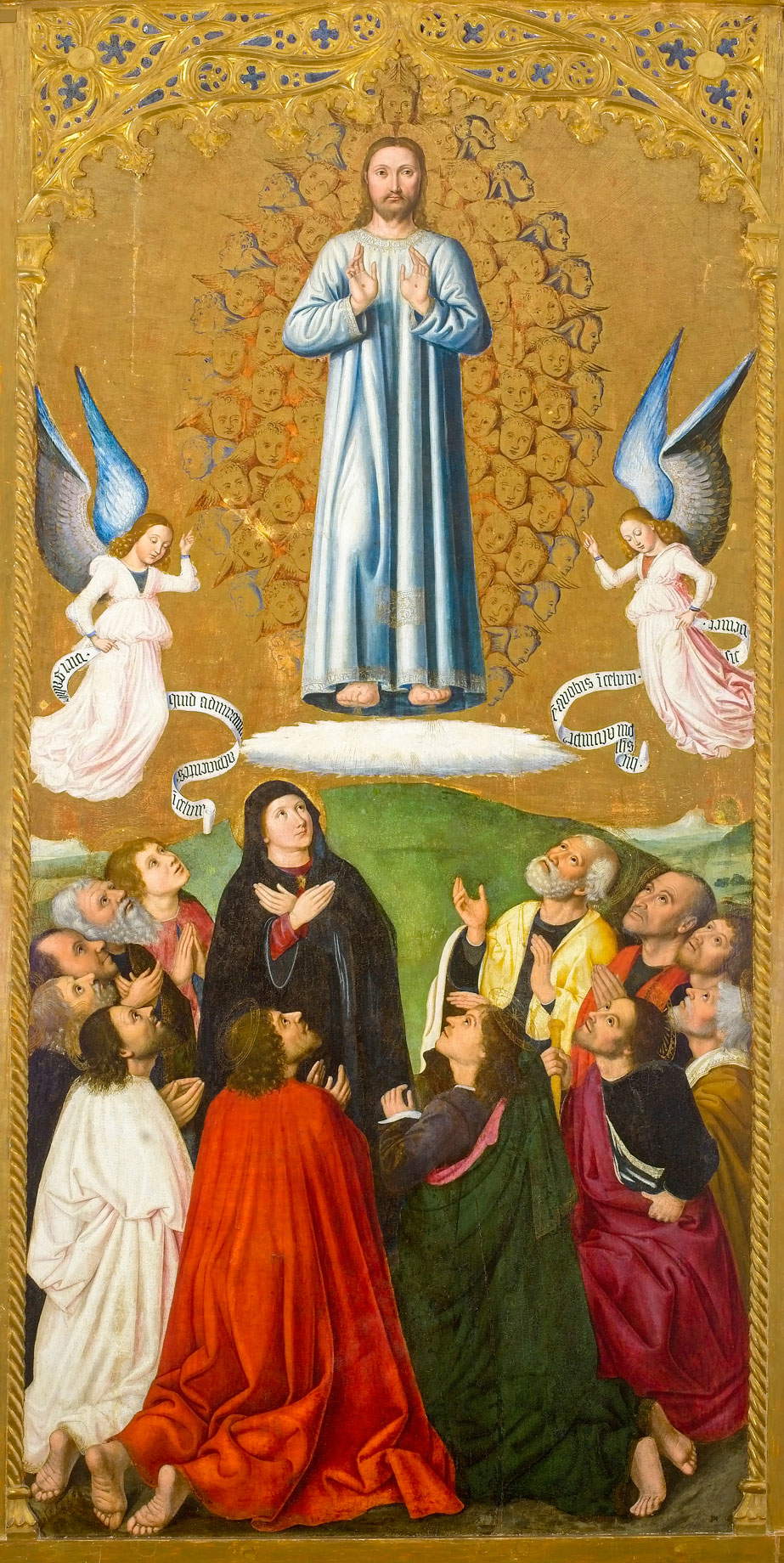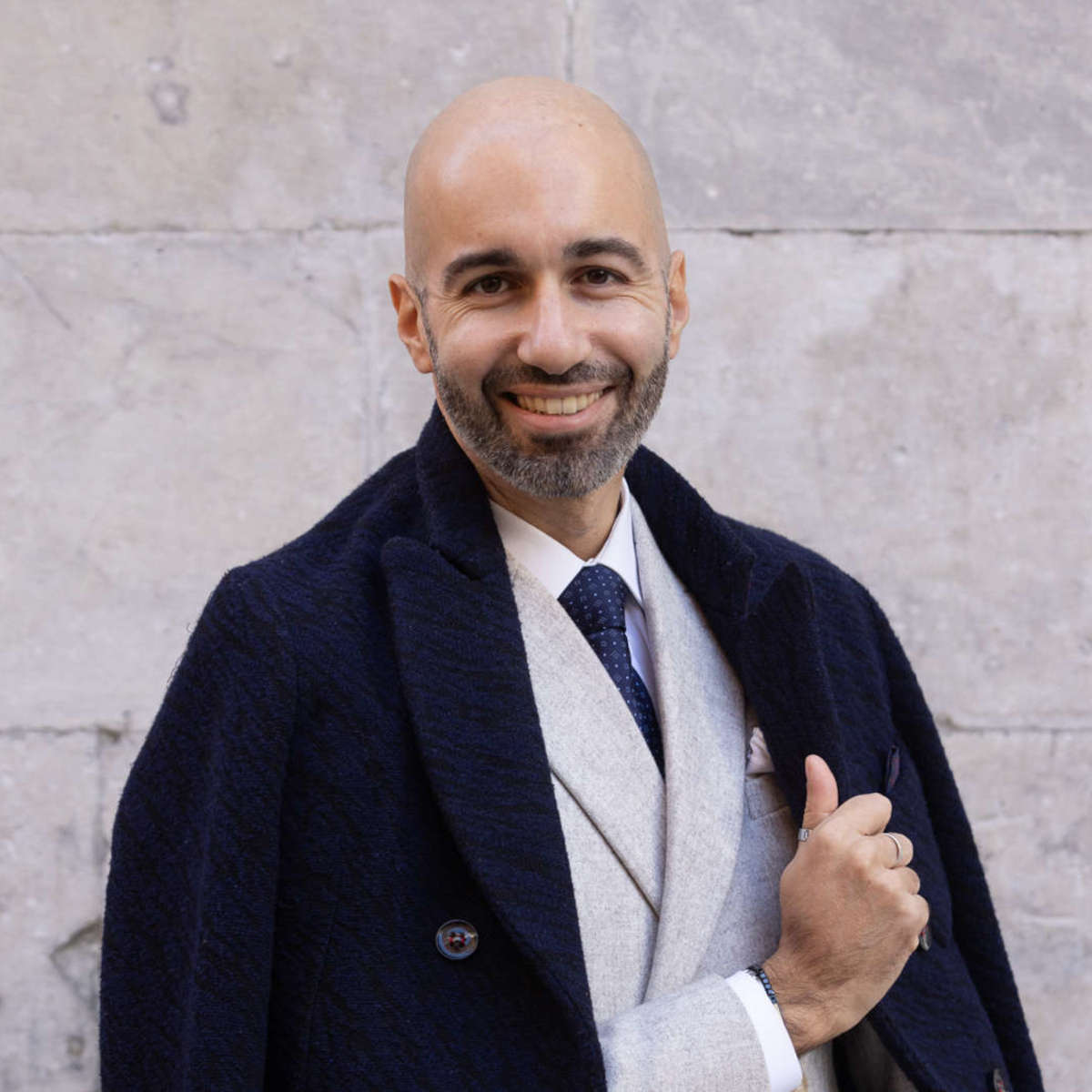Two and a half meters of panel filled and overflowing with gold, refined colors, and skillfully calculated harmonies. Ludovico Brea’sAscension will bring to the mind of some the balanced balances of a Piero della Francesca, to the memories of others the lenticular precision of the Flemish, not to mention that gold background that brings us back to the preciousness of the Gothic world, updated, however, on a new grammar, fully Renaissance. A masterpiece, in a nutshell: a term now used for any work of art, but which in the case of Ludovico Brea’s magnificent panel can be used with good reason. Meanwhile, it is the highest testimony known to us of this up-to-date and cultured painter who was born in Nice but worked for most of his career in Genoa. Still it is his first certain Genoese work, and is therefore a landmark in reconstructing his activity. Third, it is a work that admirably synthesizes the figurative culture of an artist who looked not only to his Liguria, but also to Lombardy, Provence, and Flanders. And it therefore gives a clear dimension of what the Ligurian Renaissance was all about. And then, for that matter, he is one of the pinnacles of the Ligurian Renaissance, a land that is little known to most, partly because it has so far been little explored by critics.
The meaning of the Renaissance in Liguria is to be found precisely in that well-calibrated balance between different languages and between different cultures-a melting pot typical of 15th-century Mediterranean ports. One could make a similar argument, for example, for Neapolitan or Valencian painting. Which are better known subjects and paths than Ligurian Renaissance painting. Not that there is a lack of important and extensive studies, of course: but it is a relatively recent field of inquiry and one that art historians continue to investigate. Besides, it is a subject that struggles to gain popularity with the general public because of the relative scarcity of evidence and the absence of famous artists, of great entertainers who can move crowds only by the evocative power of their names. Yet, everything could be said about the painters and sculptors who made Ligurian Renaissance art great, except that their works lack charm or fail to seduce those who find themselves in front of them perhaps even by chance, because they entered a museum to see something else. It also happens with Ludovico Brea’sAscension : many people go to Palazzo Spinola to see Antonello da Messina’sEcce Homo or the frescoed rooms of the noble residence, and are thunderstruck by the Nice artist’s golden triumph without expecting it. And it matters little that the work is fragmentary, since it is the central compartment of a polyptych of which we do not know the side panels: its powerful magnetism manages to captivate even under these conditions.
 |
| Ludovico Brea, Ascension (1483; tempera and oil on poplar panel, 253 x 130 cm; Genoa, Galleria Nazionale della Liguria at Palazzo Spinola, inv. SBAS 121489 / GNL 73/2010) |
And to think that the purchase of this crucial panel had been accompanied by a thousand controversies. Too high was the price the state had paid at auction to secure it, it was said: one million two hundred thousand euros in 2009, at the height of the economic crisis, seemed an exaggeration for the work of a painter of local interest and whose quotations had never even dreamed of touching such a figure. In fact, it was one of the most important purchases of the last two decades, and not only because theAscension is a work of the highest quality (moreover, recognized by all, even by those who most vehemently criticized the operation). It is a work of exceptional rarity, it is a work whose history is well known, it is a work that comes from Genoa and has returned to Genoa, it is a’work that makes it possible to show the public of Palazzo Spinola a fundamental piece of the colorful mosaic that was the Ligurian Renaissance, it is a work that is extremely representative of a precise period in the history of art in Liguria, and therefore it has a strong bond with the territory, which the State had a duty to reconstruct. Therefore, it did well to purchase it, even for such a sum. Also because, for a masterpiece of such magnitude, it is never the seller who decides the price, but the buyer.
The history of this work, it has been said, is well known. The historiographer Raffaele Soprani, in his Lives of Genoese painters, sculptors and architects, includes Ludovico Brea’sAscension among the “many worthy works, true witnesses of his skill,” and notes the inscription that once accompanied it (presumably it was engraved on the woodwork) in the place where it was kept, the church of Santa Maria della Consolazione: “Ad laudem summi, scandentisque etera Christi, Petrus de Fatio divino munere fecit hoc opus impingi Ludovico Niciae natus 1483, die 17 Augusti.” So we know everything: That the work was painted in 1483 and finished on August 17, and that it was executed to decorate the chapel of the Genoese notary Pietro di Fazio, in the church that was then located in the locality of Artoria, and which was later demolished in the seventeenth century to be rebuilt in borgo San Vincenzo, where it stands today (and with the urban planning changes that affected Genoa in the nineteenth century, the church ended up finding itself along via XX Settembre, at one of the busiest transit points in the city).
Before 1483 there are no other records of Ludovico Brea’s presence in Genoa, but we do not know whether theAscension was his first Genoese work. Certainly it was the most important and appreciated, since the artist, following this admirable proof, had to work for several other patrons, a sign that his panel elicited the approval of the Genoese clientele and the veneration of the faithful, who prayed before theAscensisone until the early 19th century, when the work left the church of the Consolation following the Napoleonic suppressions of religious orders and ended up in private hands, before finally being purchased by the state and destined for the National Gallery of Liguria.
And here, in these rooms that have since continued to be enriched with founding texts of the Ligurian Renaissance, since 2010 one can admire this extraordinary manifesto of the cosmopolitanism that characterized the art of the time in the region: in Ludovico Brea’sAscension coexist, in the most balanced harmony, the Flemish figurative culture that can be appreciated especially in the physiognomies of the apostles, the Italian tradition that innervates the monumentality of Christ and more in general the plasticism of all the figures, French and Provençal suggestions, as well as Brea’s typical finesse and his refined palette that embellish not only the whole (beginning with that dazzling gold), but even every single detail. Here, then, is a Christ standing seraphic and triumphant, in the center of the panel, over a singular mandorla of cherubs made only of outline and shading, and flanked on either side by two angels in symmetry, bearing a scroll in Gothic bookish script, where we read some words from the Acts of the Apostles (“Viri Galilaei, quid admiramini aspicientes in caelum?”): moreover, wanting to add a further reference to Ludovico Brea’s vast culture, one might recall that the composition, as Anna De Floriani (who together with Claire-Lisa Bionda brought the work back to theattention of critics in the 1990s), shows a clear debt to Jean Fouquet in the "timely derivation of theAscension from the miniature of similar subject that decorated Étienne Chevalier’s Book of Hours ." At Christ’s feet are the Virgin and angels arranged in a circle: each is individually characterized, as was customary in Flemish painting at the time, but the softness of the tonal transitions (look at the apostles’ robes), the elegance of the iridescence, and the vividness of the flesh tones are typical figures of Ludovico Brea’s art. And if one were to propose a great name for Ligurian Renaissance art, perhaps the choice would fall on him.

The author of this article: Federico Giannini
Nato a Massa nel 1986, si è laureato nel 2010 in Informatica Umanistica all’Università di Pisa. Nel 2009 ha iniziato a lavorare nel settore della comunicazione su web, con particolare riferimento alla comunicazione per i beni culturali. Nel 2017 ha fondato con Ilaria Baratta la rivista Finestre sull’Arte. Dalla fondazione è direttore responsabile della rivista. Nel 2025 ha scritto il libro Vero, Falso, Fake. Credenze, errori e falsità nel mondo dell'arte (Giunti editore). Collabora e ha collaborato con diverse riviste, tra cui Art e Dossier e Left, e per la televisione è stato autore del documentario Le mani dell’arte (Rai 5) ed è stato tra i presentatori del programma Dorian – L’arte non invecchia (Rai 5). Al suo attivo anche docenze in materia di giornalismo culturale all'Università di Genova e all'Ordine dei Giornalisti, inoltre partecipa regolarmente come relatore e moderatore su temi di arte e cultura a numerosi convegni (tra gli altri: Lu.Bec. Lucca Beni Culturali, Ro.Me Exhibition, Con-Vivere Festival, TTG Travel Experience).
Warning: the translation into English of the original Italian article was created using automatic tools. We undertake to review all articles, but we do not guarantee the total absence of inaccuracies in the translation due to the program. You can find the original by clicking on the ITA button. If you find any mistake,please contact us.